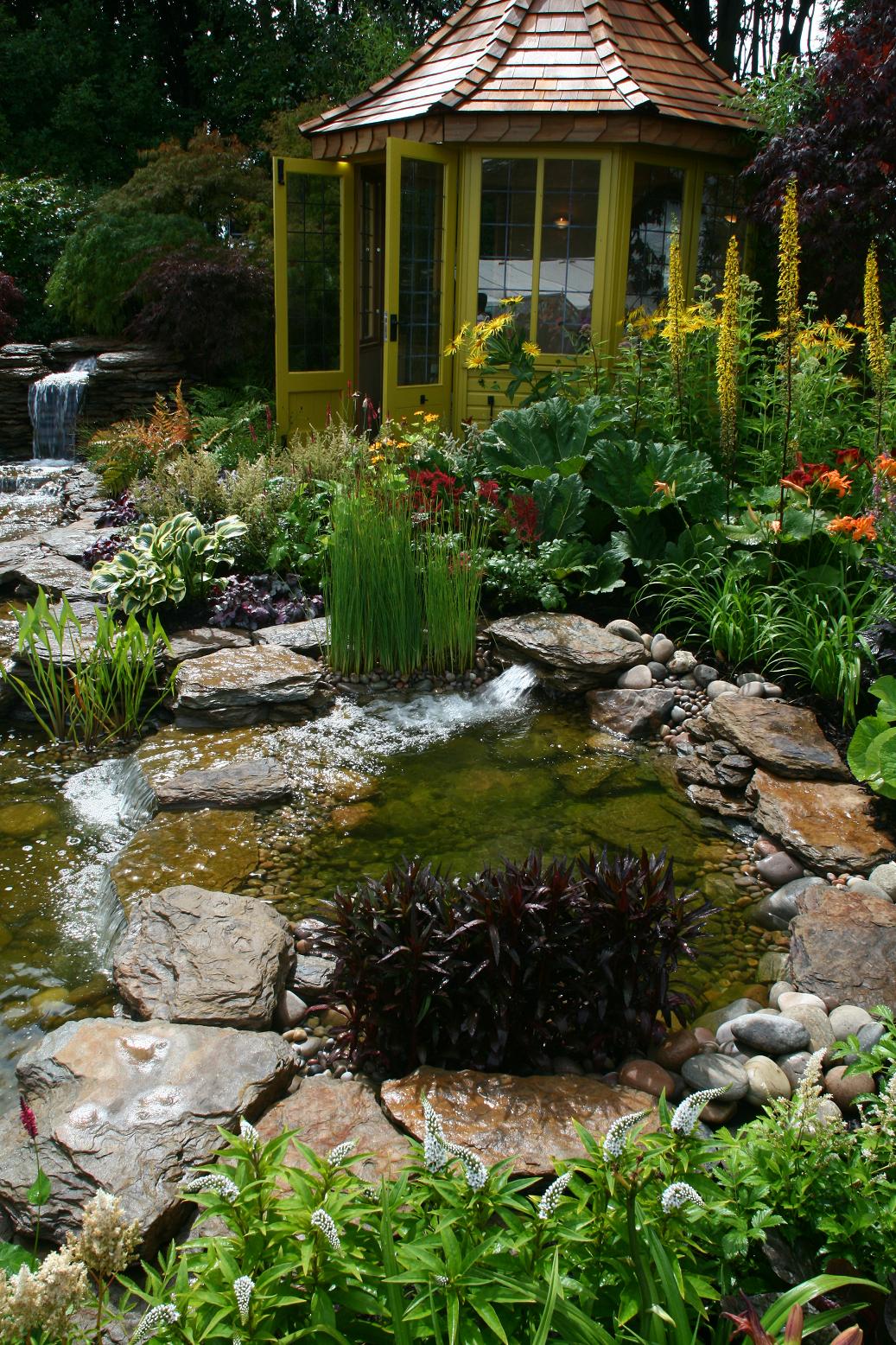Now, the orchard is easy to walk around, and the main clearing of the middle level is accessible. The bracken there, which I've now cut down three times, is still coming up, but not strongly. By comparison, the bracken on the other side of the wall, and further along the hill, where I've not done anything, is six feet tall, and impenetrable.
I have to confess that we saw a rather fine summer house at Tatton Park, one of the Malvern Collection. It's a few years off, yet, though, but it was very nice, and would be a lovely, secluded hideaway on the hillside.
Enough of that. Otherwise, on Saturday, I checked that the newly installed sprinkler on the woodstore's green roof is working, and established that my beer is ready for barrelling. The chardonnay I started at the same time, incidentally, is in the cellar clearing, and is probably ready for bottling. The dandelion is slowly clearing, having finished its vigorous fermentation; the elderflower is on a warm windowsill, bubbling furiously.
Monday was more varied, although we had to contend with showers. The butterfly netting is now up, covering the two plantings of brassicas (which replaced the alliums in the Q-bed, and the early potatoes up one arm of the C-bed). The sprouts, kale, cauliflowers, purple sprouting, and swedes have all settled in fine, and the rows of 'Golden Ball' turnips we sowed at the same time have germinated well.
We discovered a pot of leeks, which hadn't been planted out, so we filled a few gaps in the rows of leeks where tiny seedlings hadn't transplanted (only about three of thirty, and those three were properly tiny), and put the rest in spaces among the autumn onions. The earliest of these, Early Fen, looks like it's nearly ready. On a similar note, the garlics (Germidour) and summer onions (Radar), which are drying in the wood shelter, are coming along nicely.
We've found that we've been losing a lot of courgettes before they get to a sensible size, rotting from one end. On investigation, I think it's where the flower has started to rot, and this has spread into the fruit. To combat this, I'm going to try to remove the flower as soon as it's gone over, and let the fruit swell. Jenny & Philip are away, so we're also picking their fruit and veg (and sweet peas!), which means we're inundated with courgettes.
The hanging baskets, which we tried with dangling nasturtiums for the first time, are looking splendid: I must get a photo of the front of the house. I'm trying to remember to regularly feed them: strangely, the two on the front of the house proper (rather than on the porch extension) are doing less well, though they get more light (marginally).
Once that, and some weeding, was all done, we spent a little while clearing some spaces for our flower show purchases, before going in for lunch. This afternoon I've spent preparing David and Anne's wedding present: but more on that after their wedding...
































